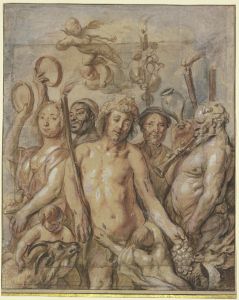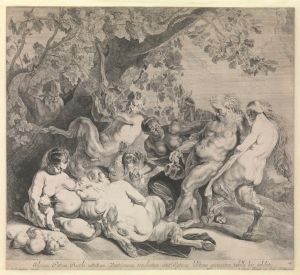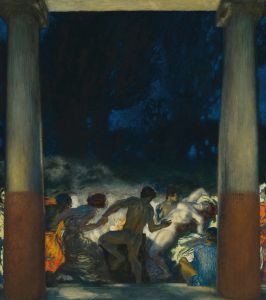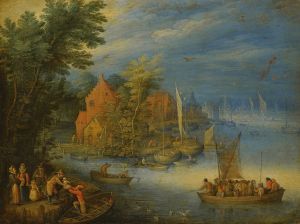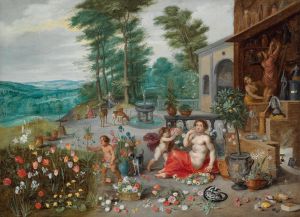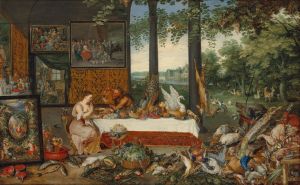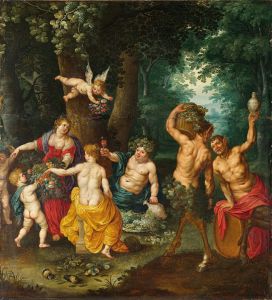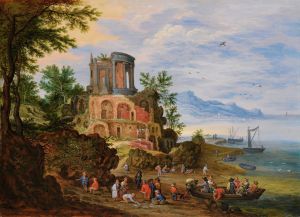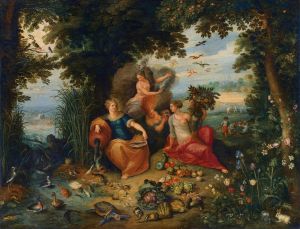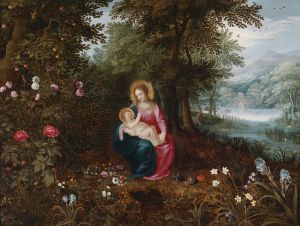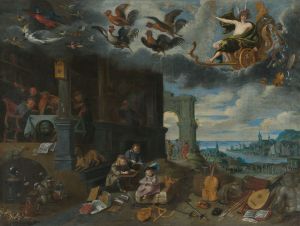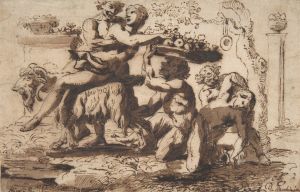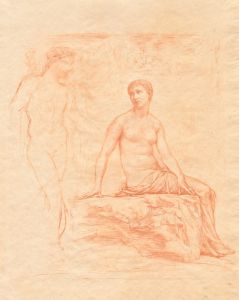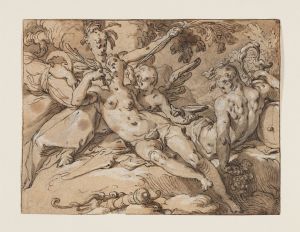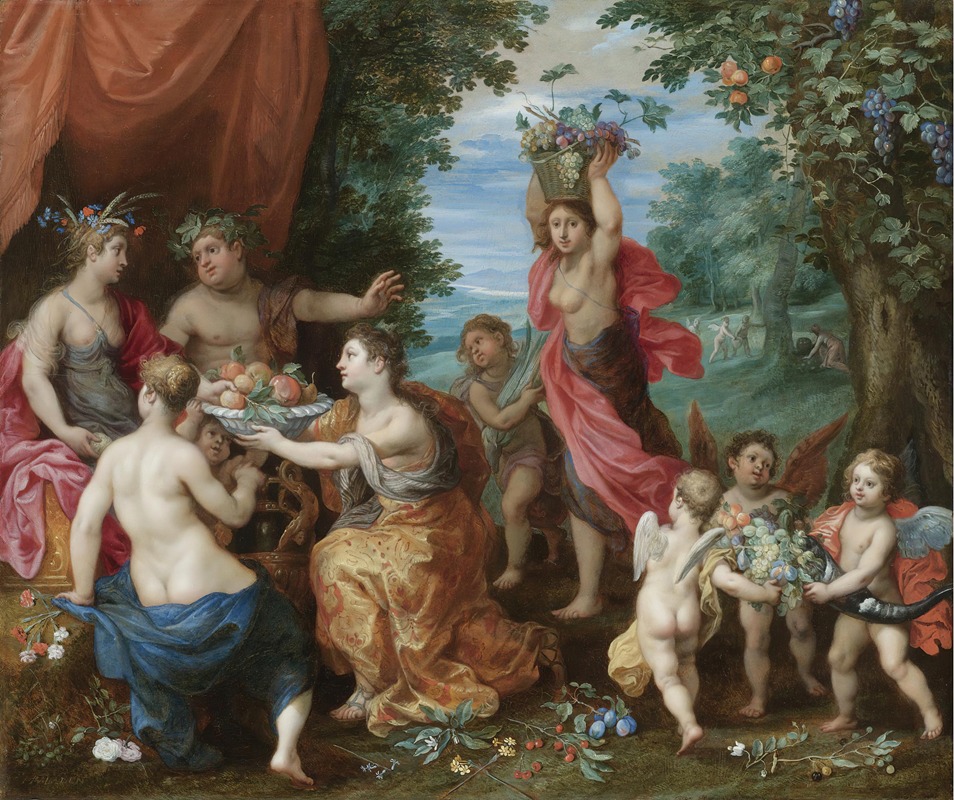
A Bacchanal With Ceres, Bacchus And Venus
A hand-painted replica of Jan Brueghel the Younger’s masterpiece A Bacchanal With Ceres, Bacchus And Venus, meticulously crafted by professional artists to capture the true essence of the original. Each piece is created with museum-quality canvas and rare mineral pigments, carefully painted by experienced artists with delicate brushstrokes and rich, layered colors to perfectly recreate the texture of the original artwork. Unlike machine-printed reproductions, this hand-painted version brings the painting to life, infused with the artist’s emotions and skill in every stroke. Whether for personal collection or home decoration, it instantly elevates the artistic atmosphere of any space.
Jan Brueghel the Younger, a prominent Flemish Baroque painter, created A Bacchanal with Ceres, Bacchus and Venus, a work that exemplifies his mastery in combining mythological themes with intricate detail and vibrant color. The painting depicts a bacchanal, a festive scene inspired by the Roman god Bacchus (the god of wine, revelry, and fertility), alongside Ceres (the goddess of agriculture and harvest) and Venus (the goddess of love and beauty). These mythological figures are surrounded by a lively gathering of satyrs, nymphs, and other participants engaged in celebration, feasting, and music-making.
The composition reflects the influence of both Jan Brueghel the Elder, the artist's father, and the broader Flemish artistic tradition. Jan Brueghel the Younger inherited his father's workshop and artistic style, continuing the legacy of detailed landscapes, allegorical scenes, and mythological subjects. This painting is characteristic of his ability to create dynamic, multi-figure compositions that balance human activity with lush natural settings.
In A Bacchanal with Ceres, Bacchus and Venus, the figures are arranged in a harmonious yet lively manner, with Bacchus often depicted holding a cup of wine or a thyrsus (a staff associated with his cult), while Ceres is shown with symbols of the harvest, such as wheat or cornucopias. Venus, as a central figure, may be portrayed with her traditional attributes, such as a mirror or doves, emphasizing her role as the goddess of love. The scene is set in a verdant landscape, filled with detailed flora and fauna, a hallmark of the Brueghel family's artistic style.
The painting is notable for its allegorical content, as it combines themes of abundance, love, and revelry, reflecting the cultural and intellectual interests of the 17th century. Such works were often commissioned by wealthy patrons who sought to display their knowledge of classical mythology and their appreciation for fine art. The vibrant colors, intricate details, and dynamic composition demonstrate Jan Brueghel the Younger's technical skill and artistic vision.
While the exact date of the painting's creation is not definitively documented, it is consistent with the artist's active period in the early to mid-17th century. The work is part of a broader tradition of Flemish Baroque painting, which often explored mythological and allegorical themes with a focus on opulence and detail.
A Bacchanal with Ceres, Bacchus and Venus is housed in a private collection or museum, though specific details about its current location or provenance may not be widely available. The painting remains an important example of Jan Brueghel the Younger's contribution to the Flemish Baroque movement and his ability to bring mythological narratives to life through his art.





